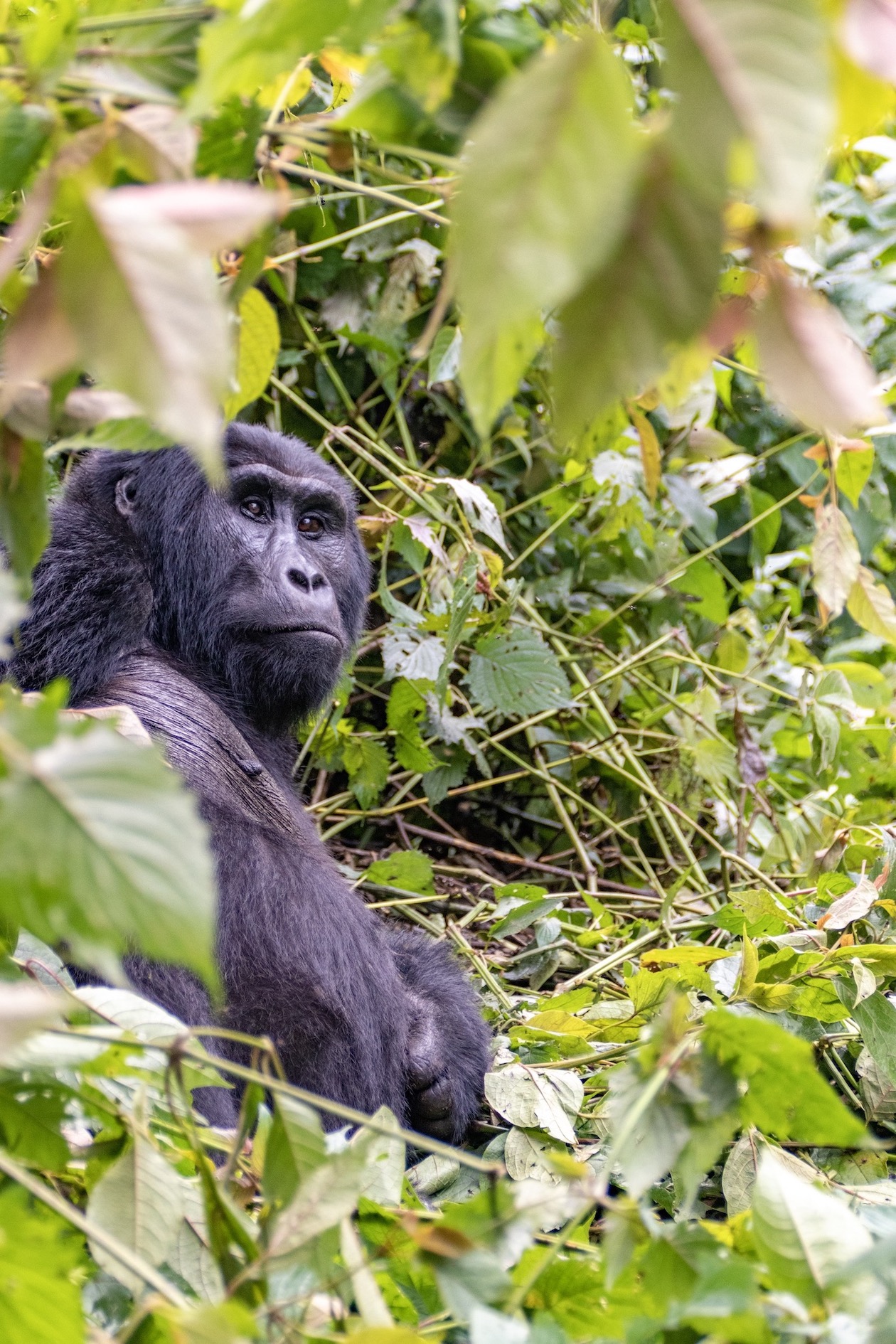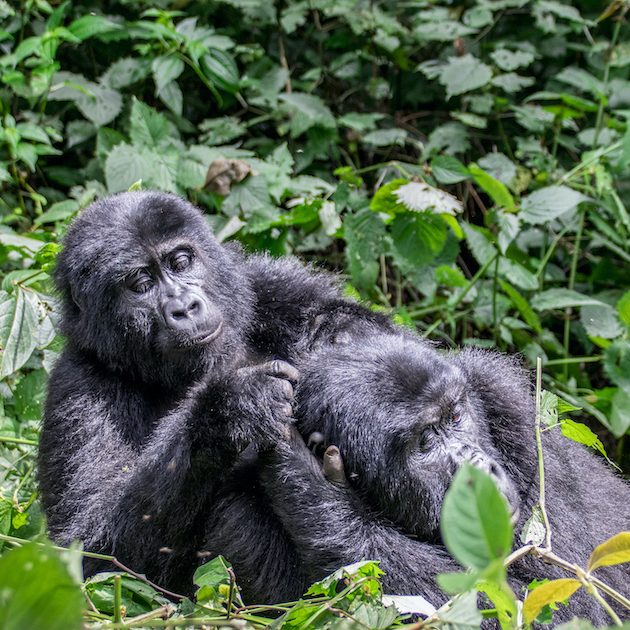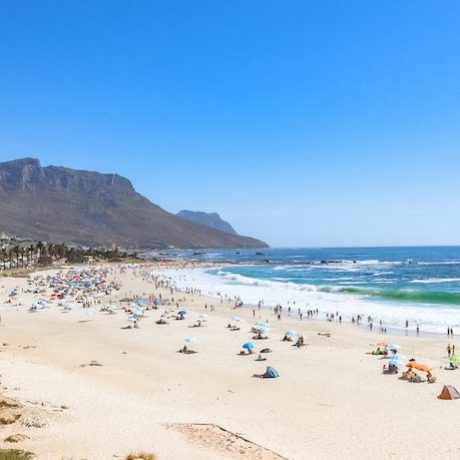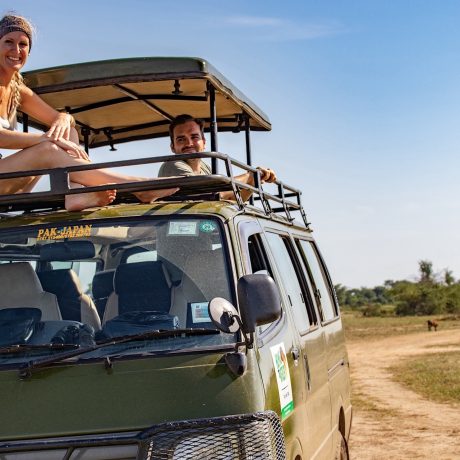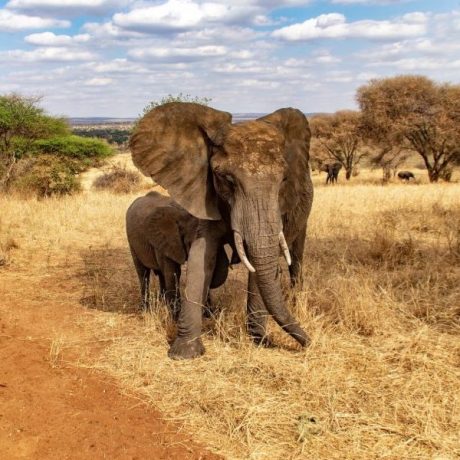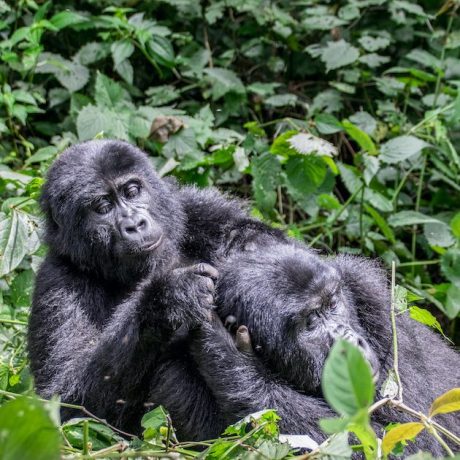Schutzgebiete, große Wälder und Nationalparks während unserer Uganda Safari
Wir haben während unserer 8-tägigen Reise mit HomeToAfrica [anzeige] durch das Land, das als auch die Perle Afrikas bekannt ist, eine Menge gesehen. Wir wollen euch hier die schönsten Nationalparks und Gebiete Ugandas vorstellen, damit ihr wisst, welche Tiere ihr wo sehen könnt. So viel schon jetzt: Das Land hat uns in seinen Bann gezogen.
Auf unserer Uganda Safari haben wir die eingezäunte Ziwa Rhino Sanctuary, den wunderschönen Murchison Falls Nationalparks, den Kibale Forest Nationalpark, den Queen Elizabeth Nationalpark und den mystischen Bwindi Impenetrable Forest besucht.
Ziwa Rhino Sanctuary
Die Nashorn Schutzgebiet war der erste Stopp während unserer Uganda Safari und befindet sich etwa zwei Stunden nördlich von Kampala. Der Park ist eingezäunt und wird auch bewacht. Leider ist das zwingend notwendig, denn das Nashorn steht kurz vor der Ausrottung. Den Zaun bemerkt man aber nicht, wenn man sich im Schutzgebiet bewegt und die beeindruckenden Tiere beobachtet. Aufgrund der Größe des Parks fühlt es sich an wie in freier Wildbahn.
Im Park leben fünfundzwanzig Southern White Rhinos. In den nächsten Jahren steht die Auswilderung der ersten Tiere an, um das Nashorn in Uganda wieder anzusiedeln. Hoffentlich könnt ihr auf eurer Uganda Safari dann schon die ersten freien und wilden Nashörner in Uganda sehen.
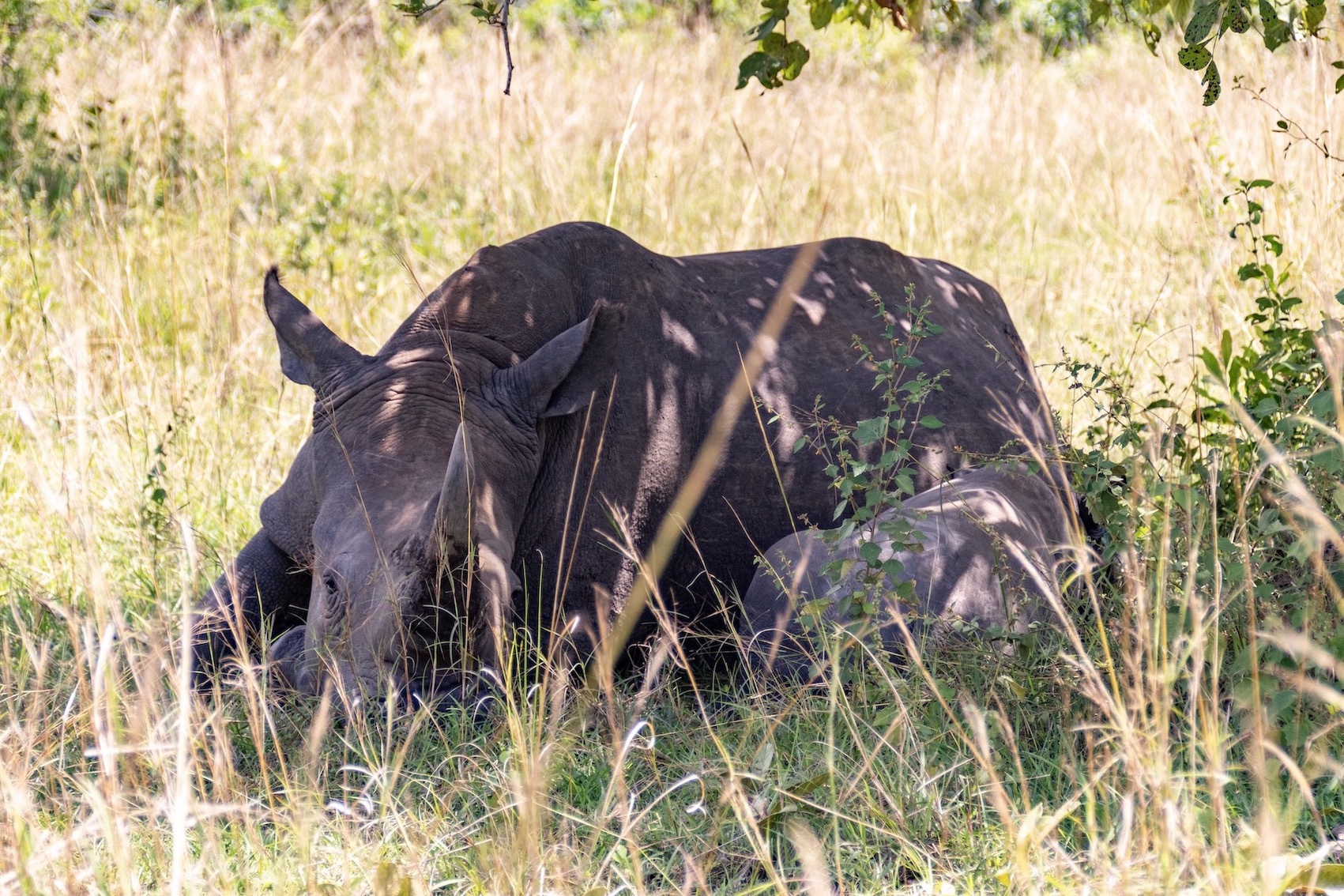
Wir durften bei einem Bushwalk sieben Nashörner beobachten und kamen ihnen wirklich sehr nah. Immer begleitet von einem Ranger, erhält man unglaublich interessante Informationen und unterstützt mit seinem Besuch auch die Erhaltung dieser gefährdeten Art.
Short-Fact über Nashörner: Sie können nicht gut sehen, aber verdammt gut riechen und hören.
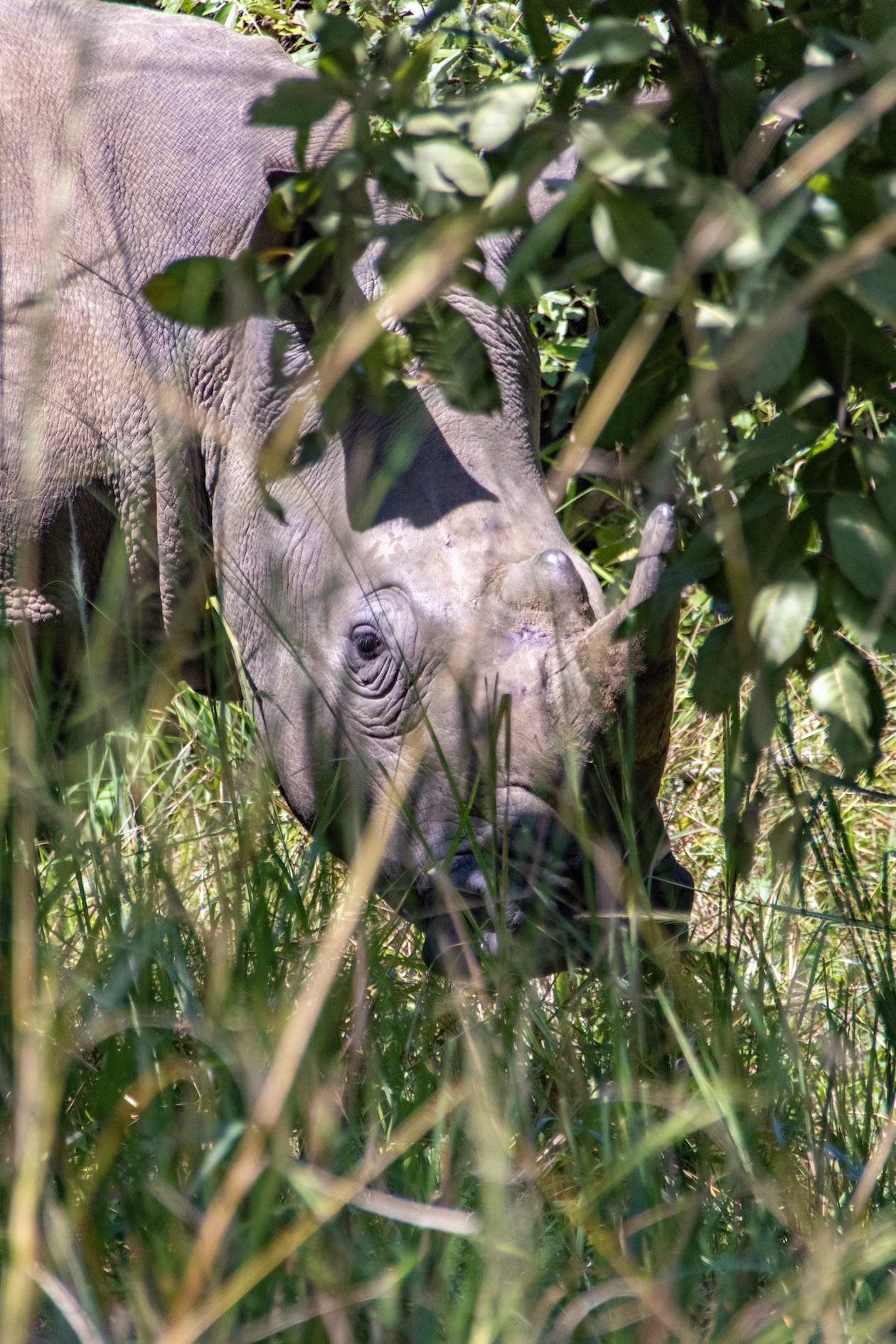
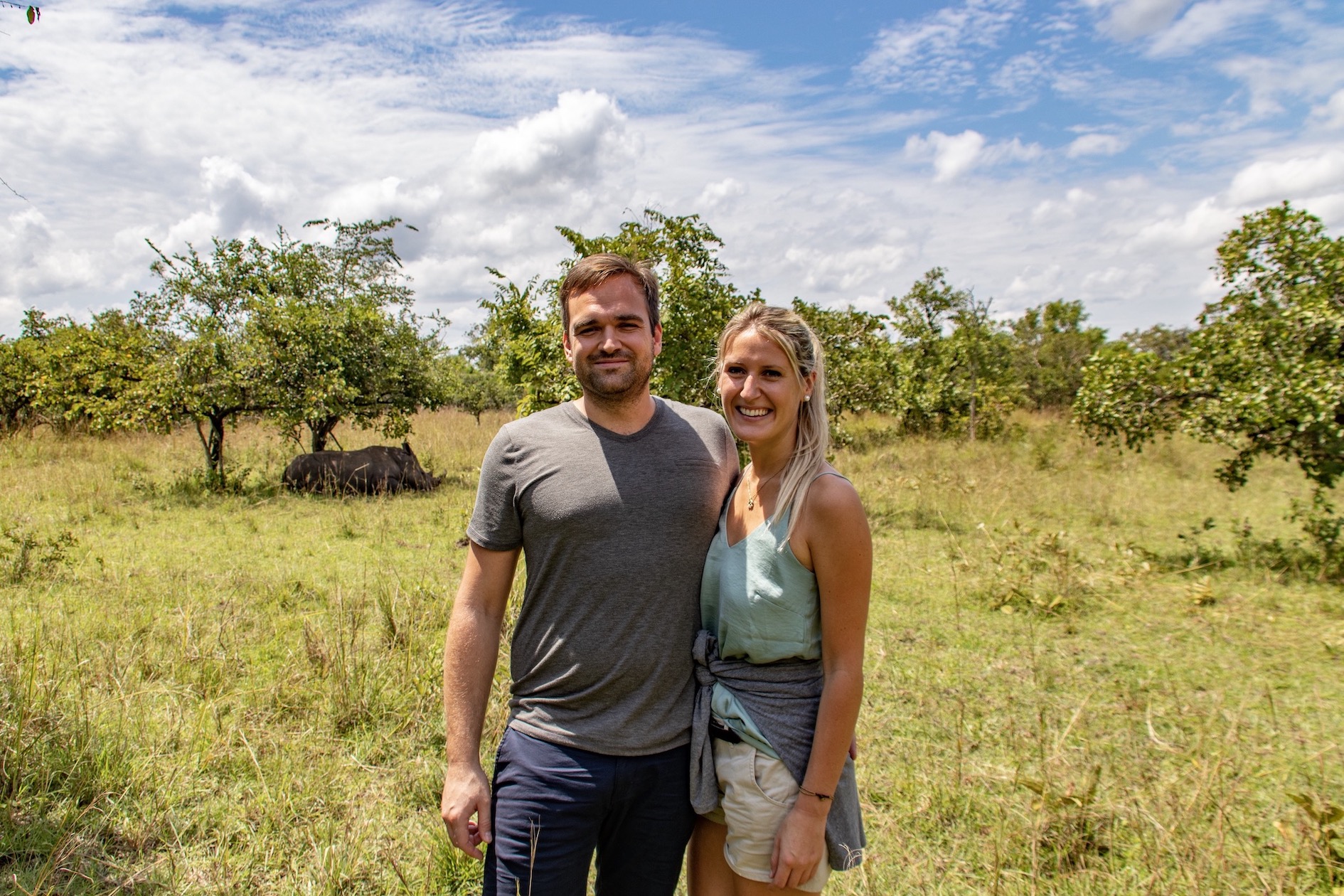
Murchison Falls Nationalpark
Der Murchison Falls Nationalpark wird durch den Victoria Nil in den südlichen und nördlichen Part geteilt. Der südliche Teil ist von saftig grünem Urwald geprägt, der nördliche Teil ist Savanne und beheimatet die Tiere, wegen denen man in Uganda auf Safari geht.
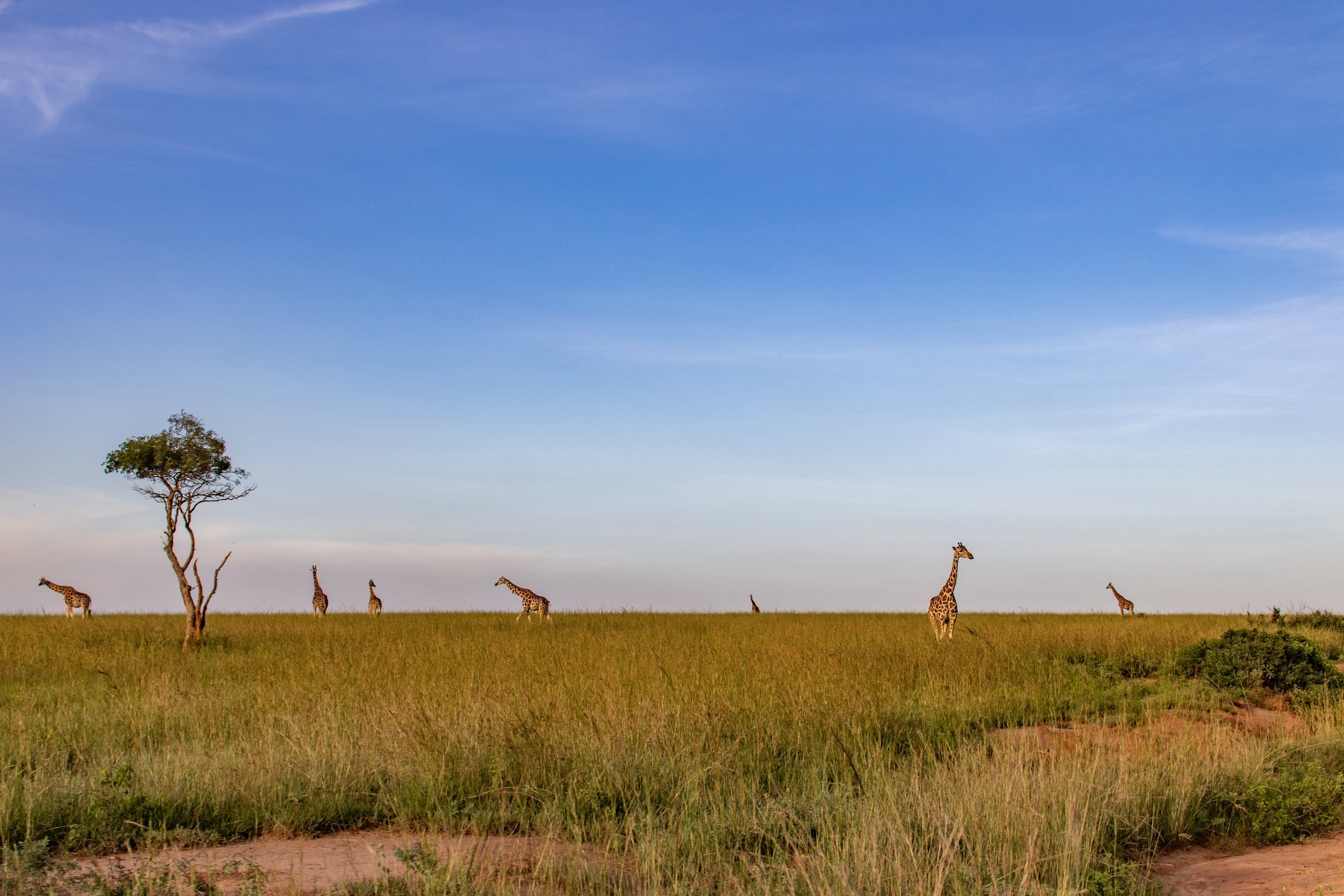
Von beiden Seiten ist eine Bootstour zum mächtigen Murchison Wasserfalls möglich. Bei dieser Tour konnten wir Elefanten, Nilpferde und Krokodile vom Wasser aus beobachten und kamen ihnen dadurch sehr nah.
Ziel der Bootstour ist der Wasserfall, der von unten aber nicht seine ganze Schönheit zeigt. Dafür solltet ihr ihn euch von oben ansehen.
Die Bootsfahrt dauert ca. 2 bis 3 Stunden und ist wirklich cool.
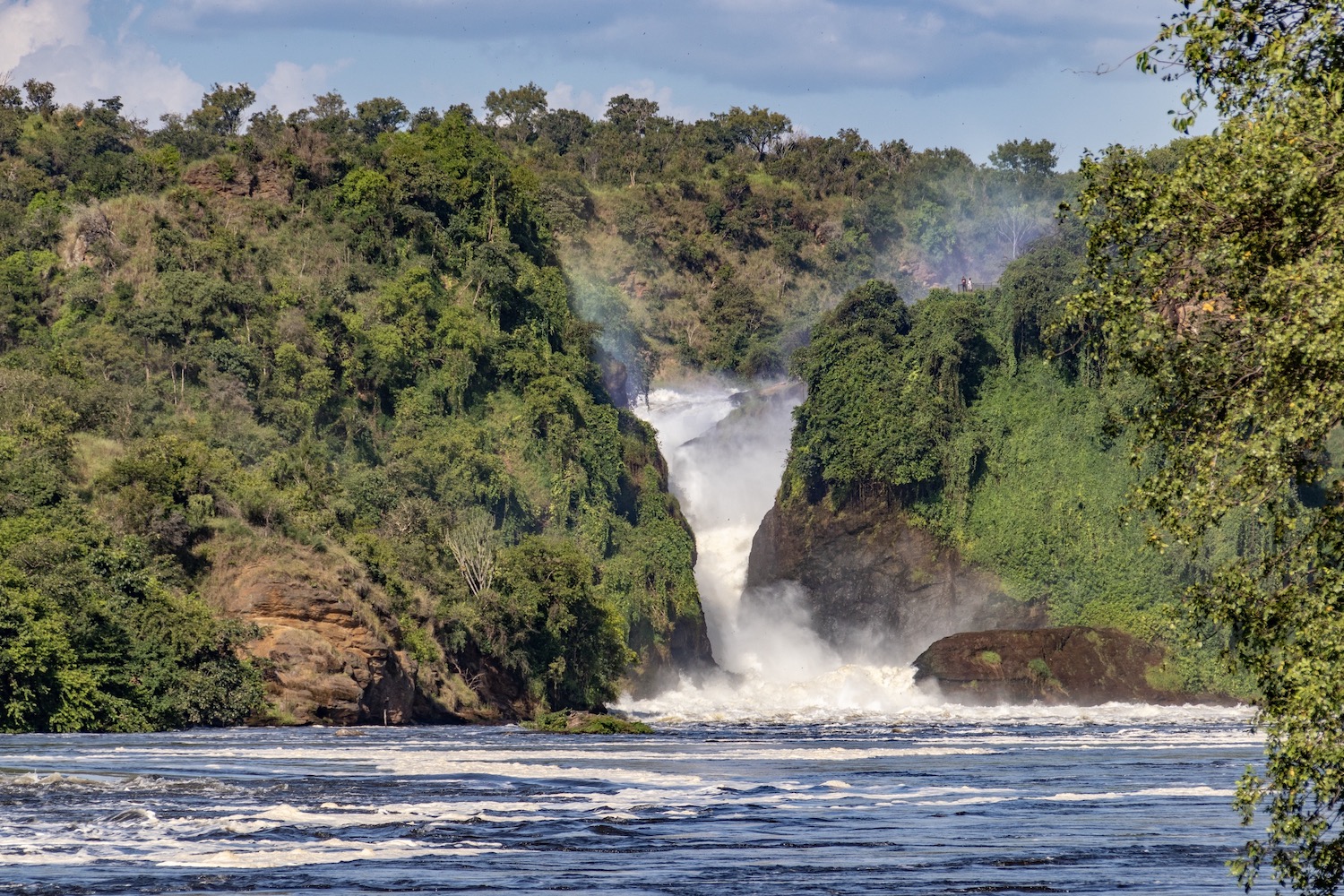
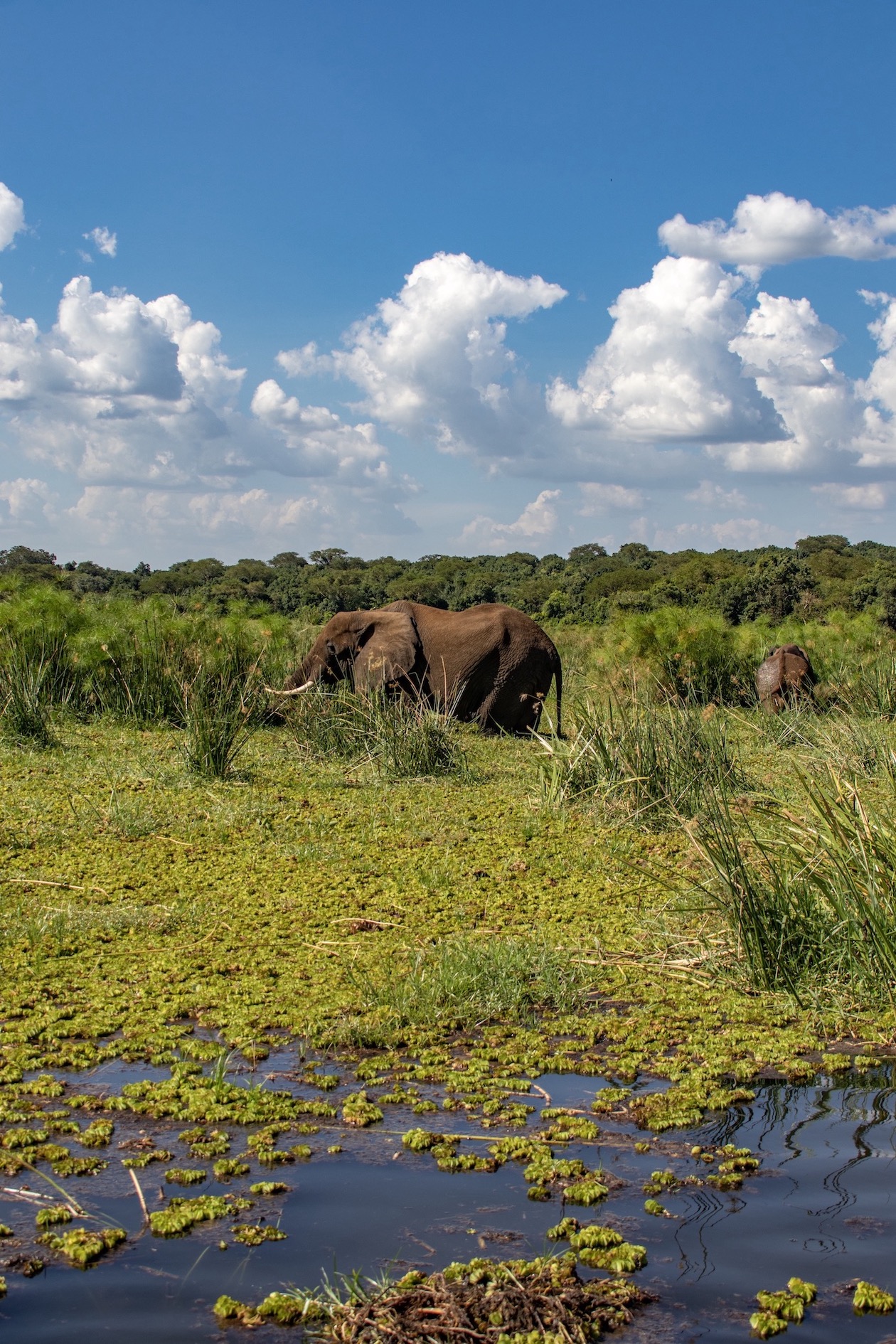
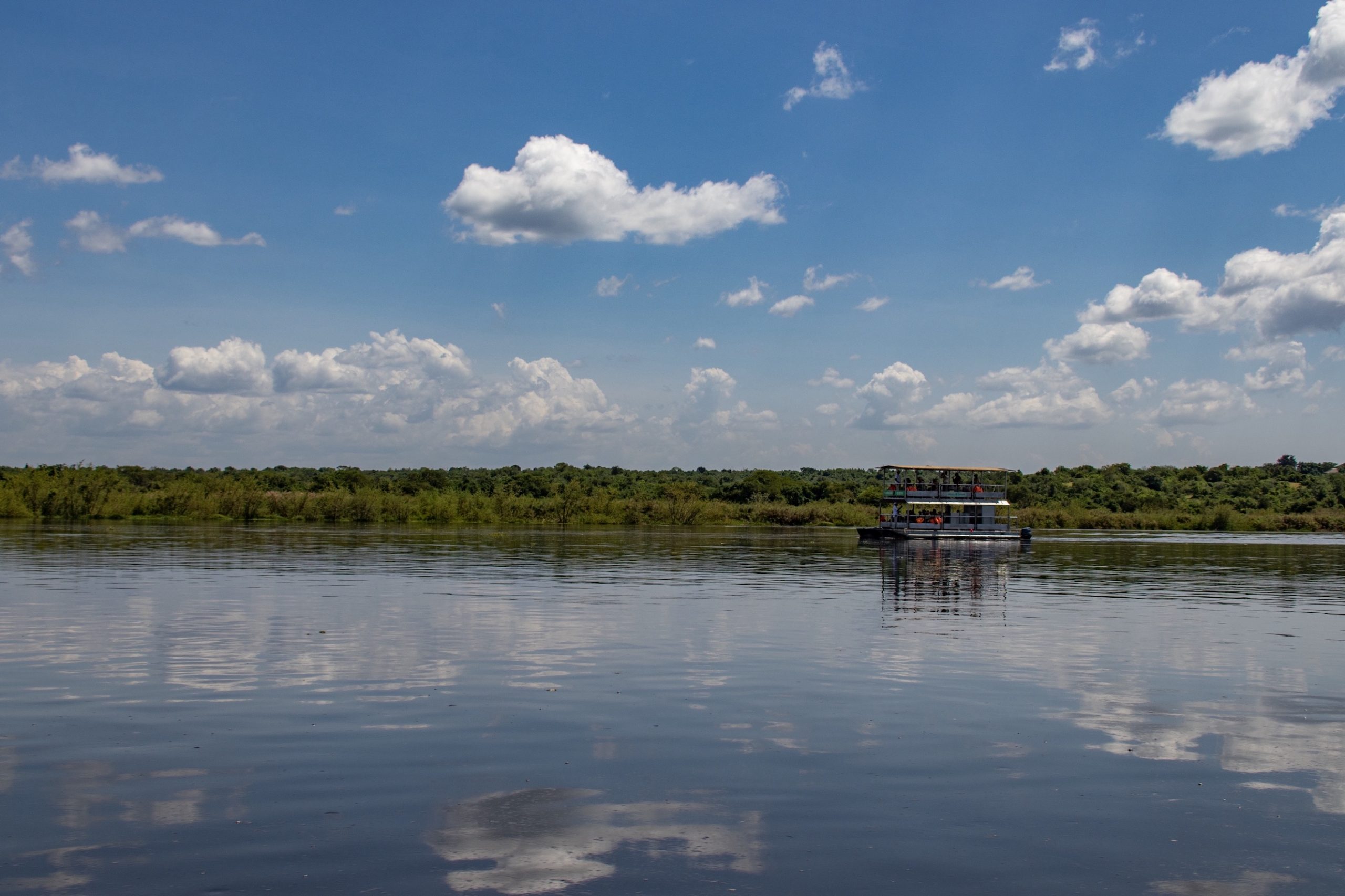
Der Kapitän lässt die Passagiere bei Bedarf auch an einer kleinen Anlegestelle raus, sodass ihr bis „Top of the Falls“ wandern könnt.
Voraussetzung: Euer Guide weiß Bescheid und holt euch oben wieder ab. Der Walk kostet $15 und führt idyllisch am Wasserfall entlang.
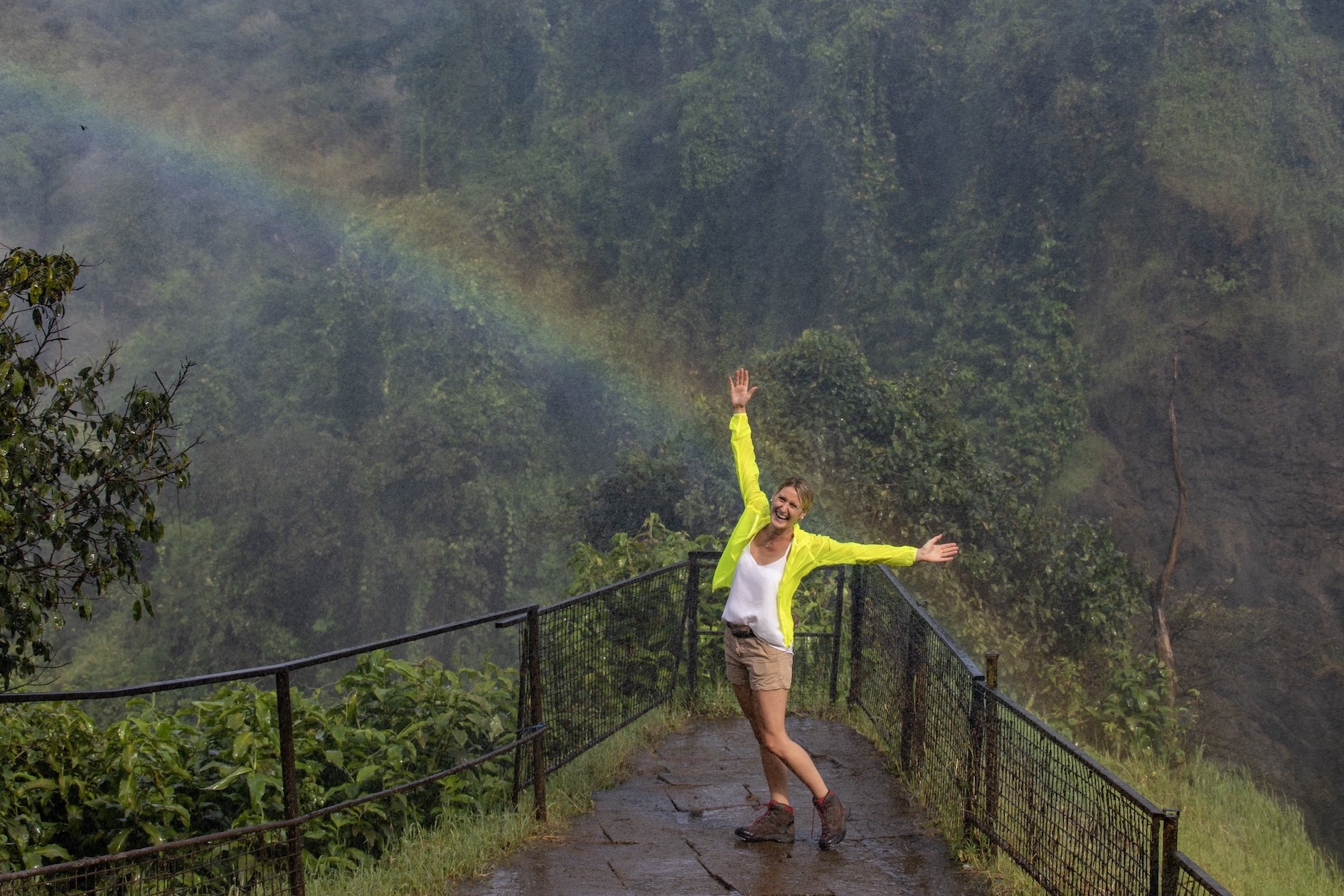
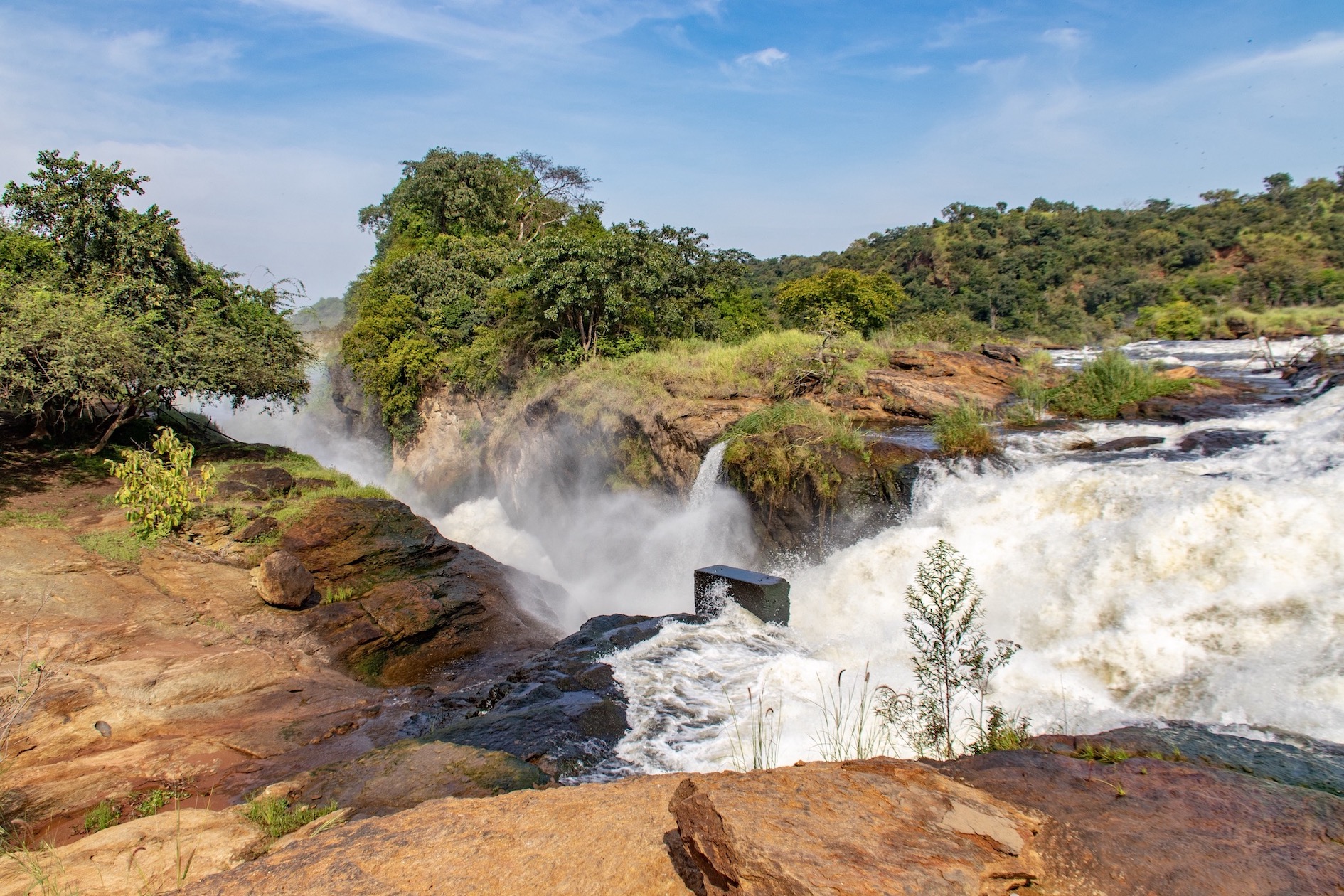
Die Autofähre, die den südlichen und nördlichen Teil des Parks verbindet überquert den Nil in der High Season stündlich und in der Low Season alle zwei Stunden. Die Überfahrt dauert ca. 5 Minuten.
Im nördlichen Teil befinden sich die großen Raubkatzen, unglaublich viele Giraffen und Elefanten. So viele Giraffen haben wir noch nirgendwo anders gesehen. Die Landschaft ist unglaublich schön. Eine wunderschöne Vegetation mit hohen Gräsern, Palmen und großen Bäumen. Alles steht in saftigem grün, denn der Murchison Falls Nationalpark verfügt über viele kleine Wasserquellen.
Landschaftlich und vom Wildlife ist der Murchison Nationalpark unserer Meinung nach der schönste aller Uganda Nationalparks.
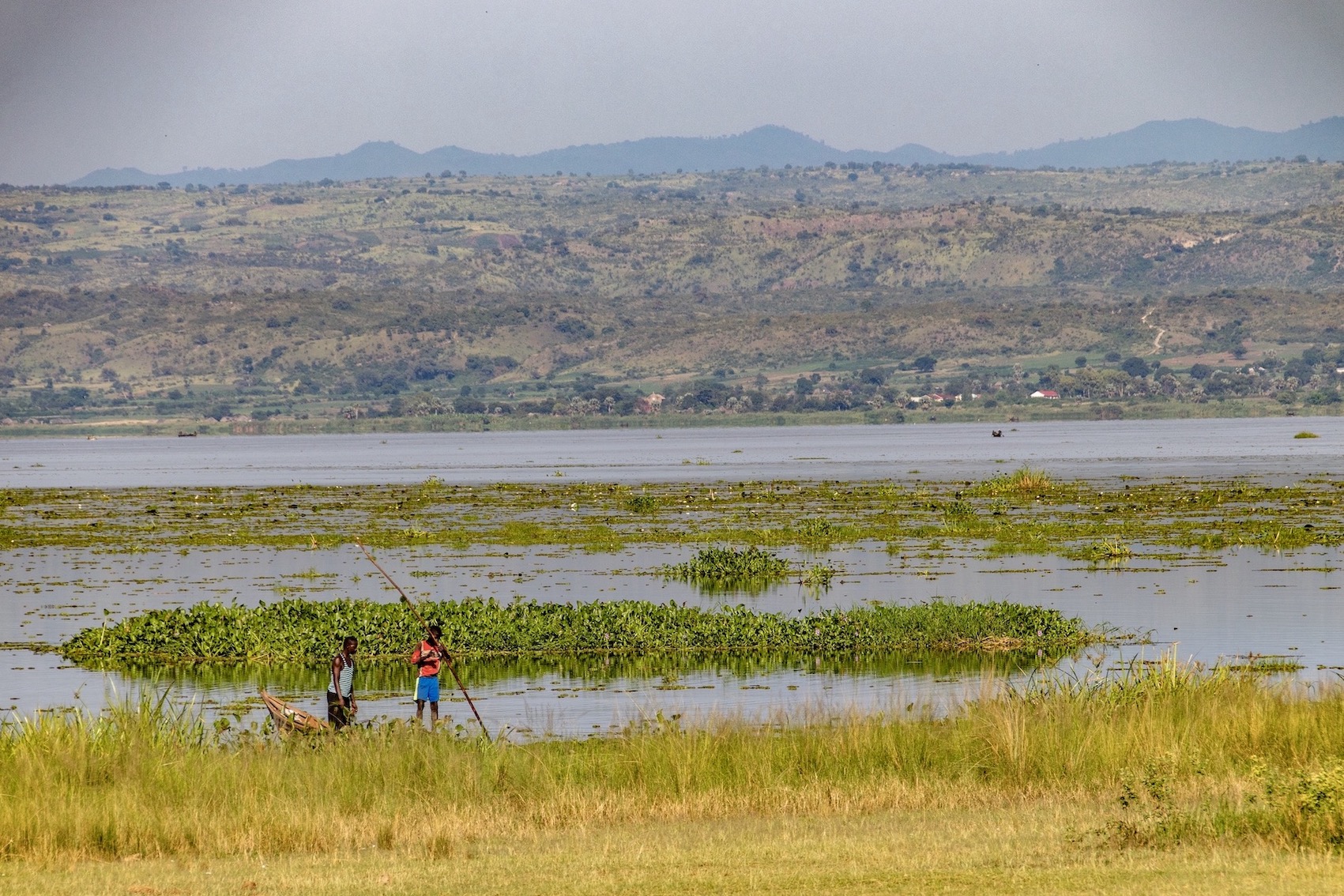
In diesem Nationalpark des nördlichen Ugandas befinden sich mehrere Unterkünfte. Die Lodges sind nicht umzäunt, sodass man in der Nacht durchaus mal Besuch von wilden Tieren erhalten kann. In den Gebäuden seid ihr aber natürlich sicher. Dadurch konnten wir aber auch vom Pool aus Giraffen in nächster Nähe im Sonnenuntergang beobachten. Unglaublich schön.
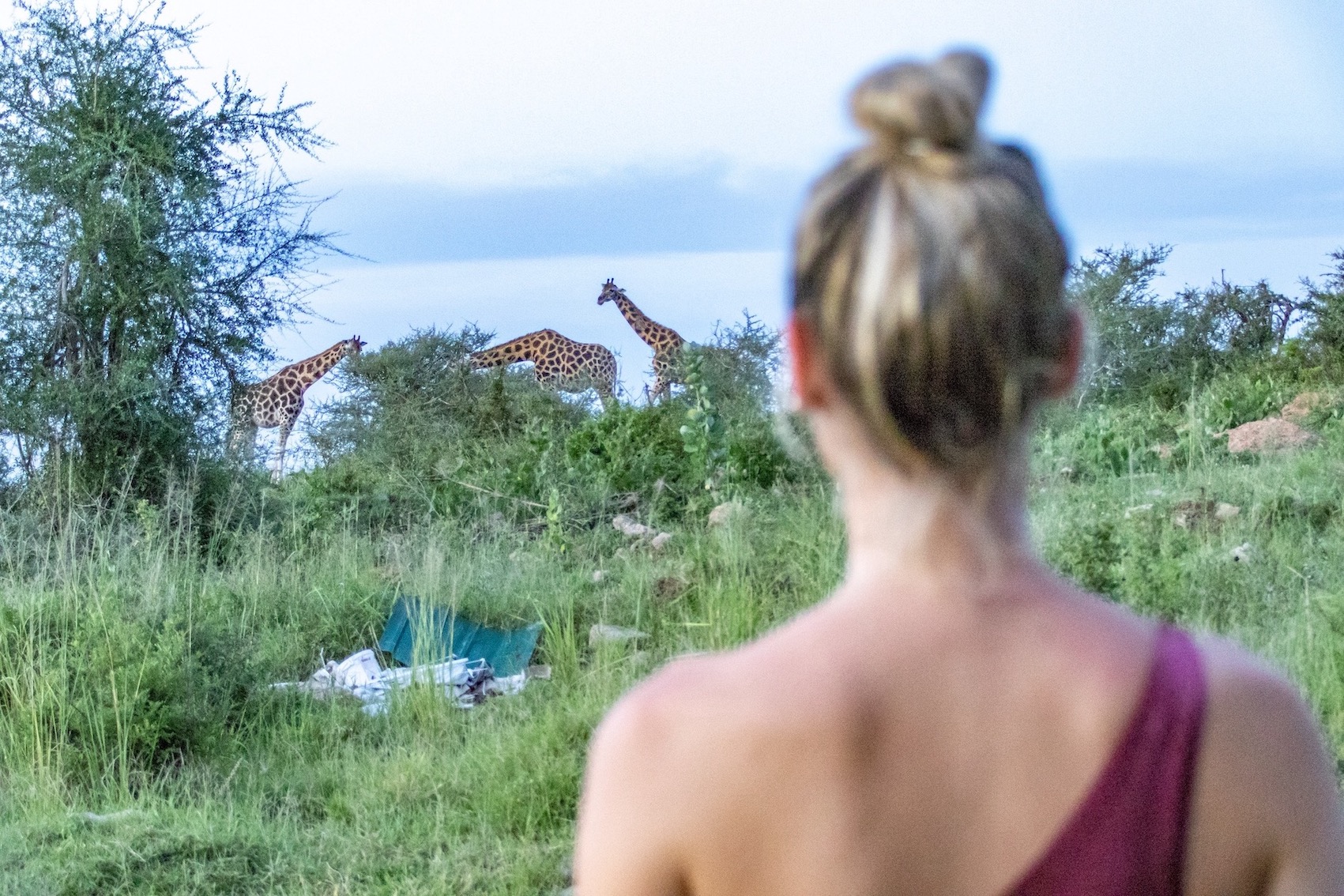
Kibale Forest Nationalpark - Uganda Nationalparks
Wenn ihr Schimpansen sehen wollt, kümmert euch bereits lange vor eurer Uganda Safari um die Permits. Mit etwa $150 pro Person seid ihr dabei. Im Vergleich zu den Gorilla Permits ein echtes Schnäppchen und dazu noch ein absolutes Highlight der Uganda Safari. Wenn ihr ein Safari-Packet bucht, kümmert sich natürlich der Touranbieter um die Permits.
Früh am Morgen haben wir uns zusammen mit anderen Gruppen am Parkeingang eingefunden. Nach einem kurzen informativen Briefing zu Verhaltensregeln, Territorium und Lebensweise der Primaten sind wir in kleinen Gruppen in den Dschungel marschiert. Das Terrain ist meist flach und nicht sonderlich schwer zu begehen. Bei Bedarf könnt ihr euch aber einen Träger buchen, der einen unterstützt.
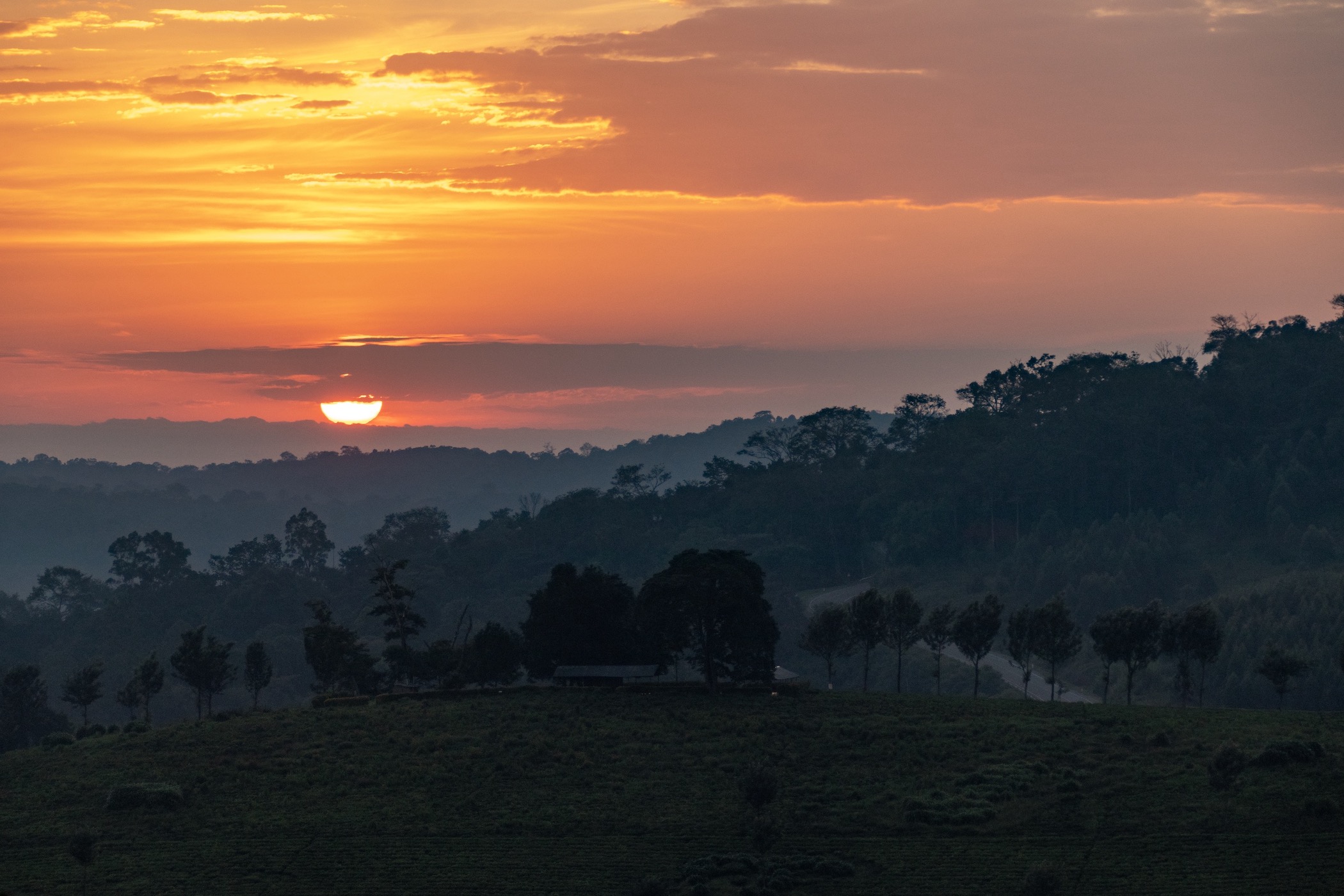
Im Kibale Forest befinden sich vier Schimpansen-Communities, wovon drei nur zu Forschungszwecken von Menschen besucht werden dürfen, die vierte aber für Touristen zugänglich ist. So wird hier versucht, das natürliche Gleichgewicht durch den Tourismus nur wenig zu belasten.
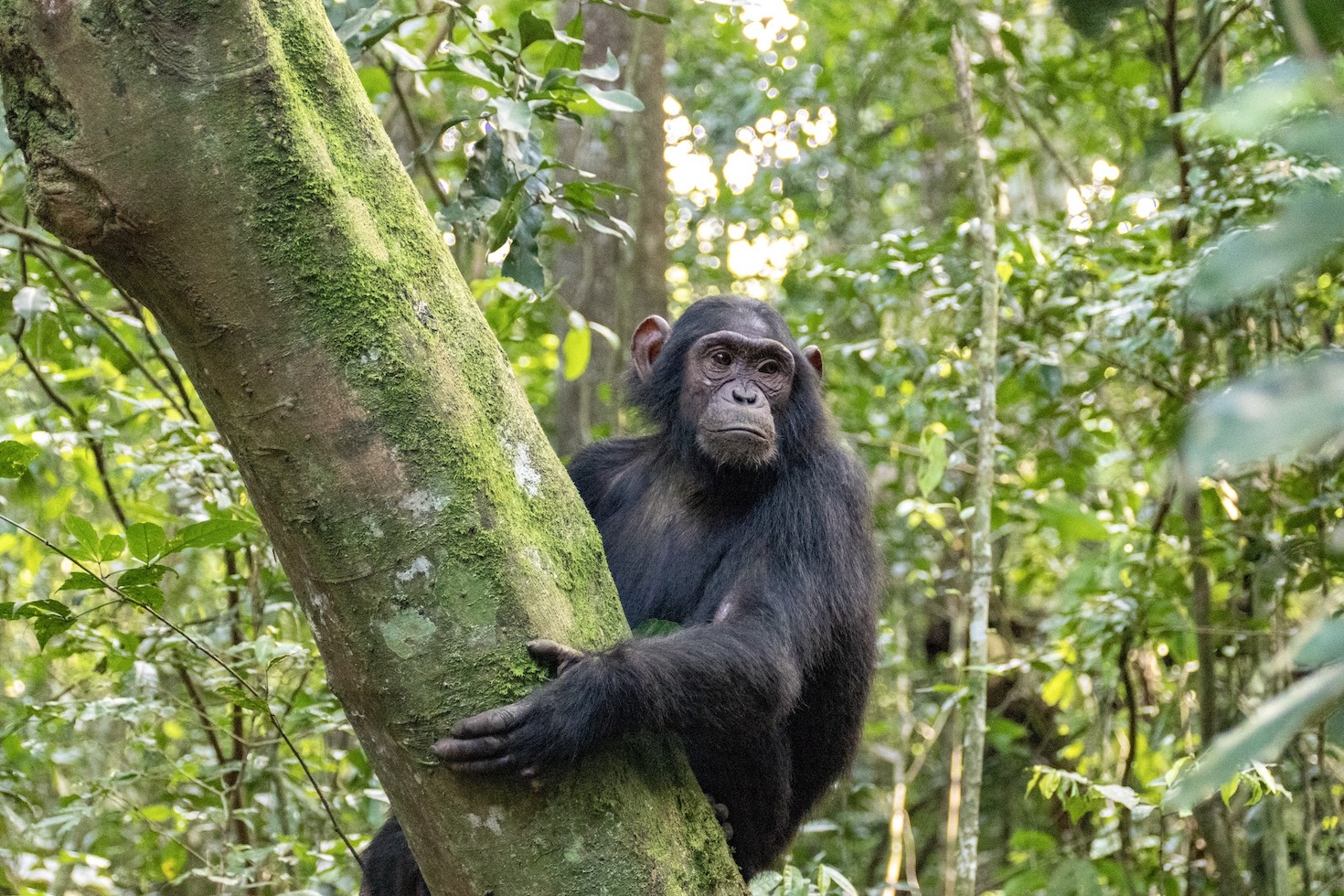
Folgende Ausrüstung empfehlen wir euch für den Walk in den Dschungel zu den Schimpansen:
– Lange Kleidung
– Lange Socken (die Hose in die Socken stecken)
– Mückenspray
– Wasser
– Regenjacke (da es im Rainforest immer wieder mal regnen kann)
– Fotoequipment
– Wanderschuhe
– Trinkgeld (für den Guide)
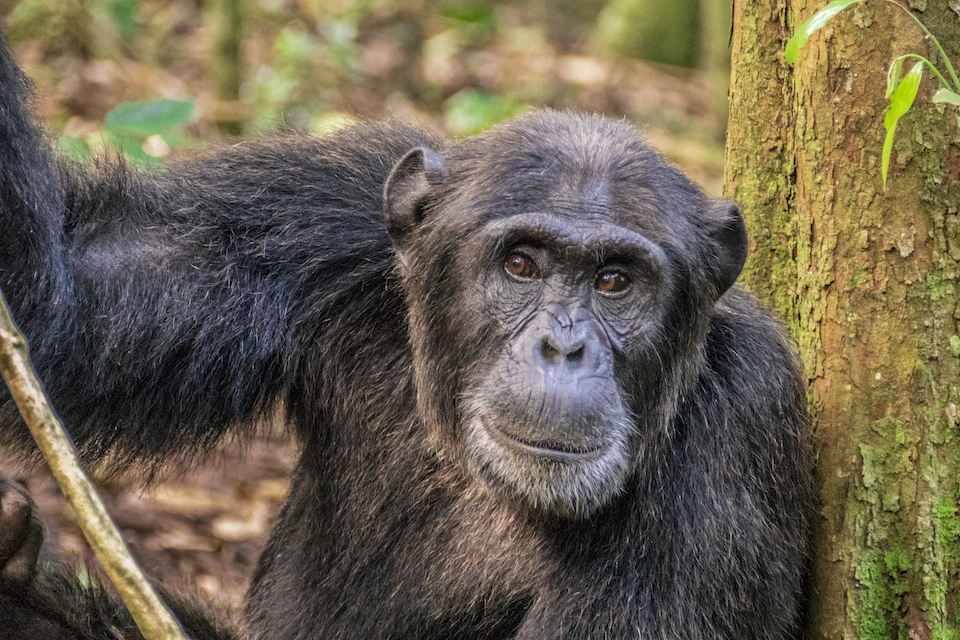
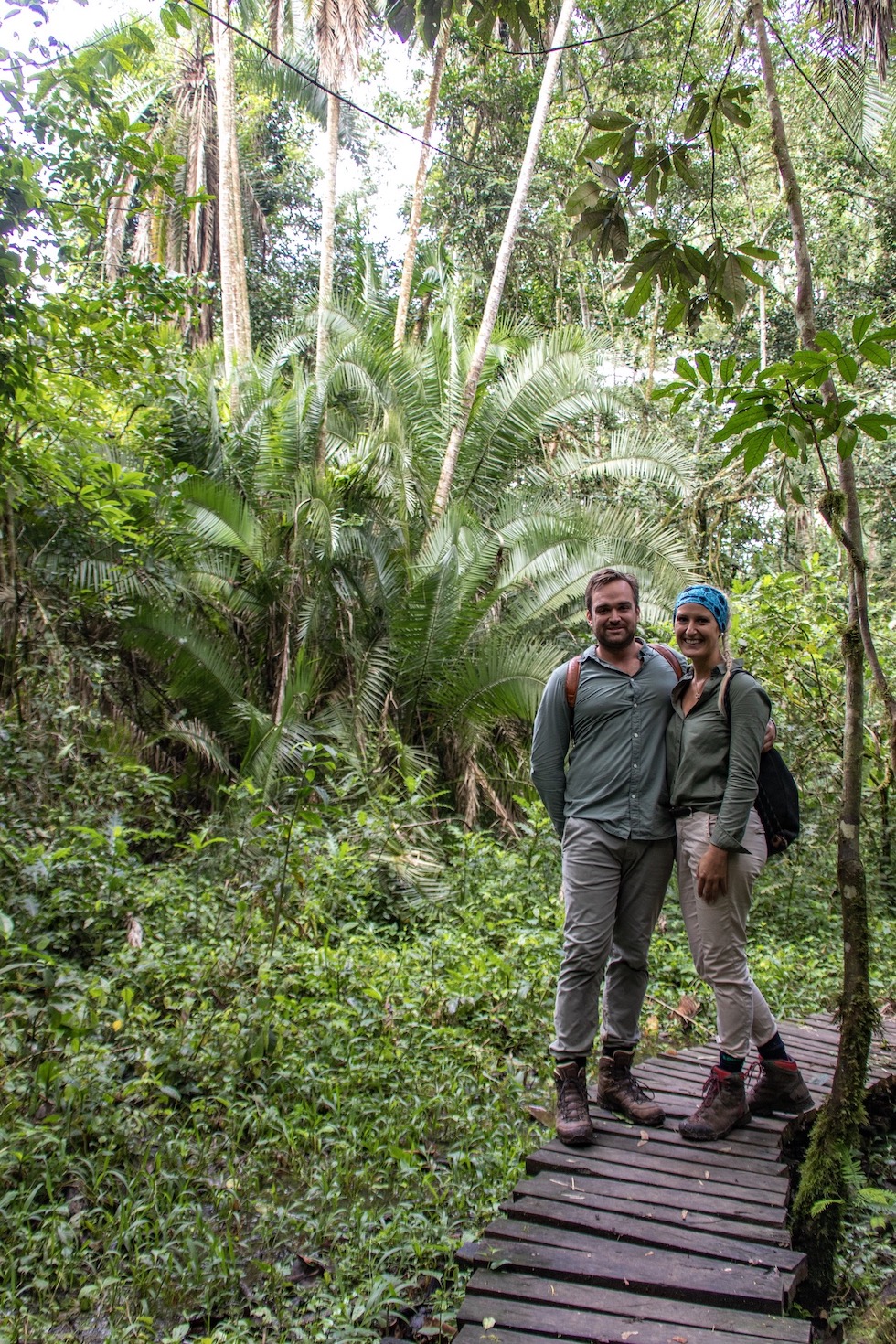
Nach etwa 20 Minuten Wandern durch den feuchten Dschungel haben wir die ersten Schimpansen gehört. Ihr Kreischen hallt wirklich durch den ganzen Urwald. Bald darauf haben wir auch den ersten Primaten in den Baumkronen erspäht. Nach einigen Minuten ist er tatsächlich von seinem Baum runter auf die Boden gekommen. In einem ordentlichen Tempo ist er durch den Dschungel marschiert. Wir natürlich in gebührendem Abstand hinterher. Plötzlich standen wir mitten in der Schimpansen-Familie und wurden von allen Seiten argwöhnisch beäugt. Was für ein cooles Erlebnis.
Es ist essentiell immer einen gewissen Respektsabstand zu halten und die Verhaltensregeln zu befolgen. Aber Achtung, manchmal hilft ein Sicherheitsabstand auch nicht gegen verrückte Schimpansen, die zeigen wollen, wie stark sie sind. Die Affen werfen mit Stöcken und reißen Bäume aus. Sie veranstalten einen riesen Zirkus, um uns zu zeigen, dass wir hier nur Gäste sind. In unserer Gruppe wurde jemand von einem Schimpansen mit einem Holzstock geschlagen. Echt verrückt diese Kerle.
Der Kibale Forest Nationalpark ist wirklich der außergewöhnlichste der von uns besuchten Uganda Nationalparks, denn die Schimpansen ziehen einen wirklich in den Bann.
Queen Elizabeth Nationalpark - Uganda Nationalparks
Dieser Nationalpark Ugandas ist bekannt für seine auf Bäume kletternden Löwen. Leider hatten wir hier nicht so viel Glück wie in den anderen Parks und haben kaum Wildlife gesehen, sodass es für uns der unspektakulärste Park war.
Eine Safari in Uganda hat natürlich immer damit zu tun, zum richtigen Zeitpunkt am richtigen Ort zu sein und dieses Glück hatten wir im QE leider nicht. Dafür war unsere Unterkunft die spektakulärste auf der ganzen Uganda Safari.
*Update: Im Queen Elizabeth Nationalpark kam es Anfang 2019 zu einer Entführung einer Safari-Touristin und ihres Guides durch Rebellen aus dem benachbarten Kongo. Beide wurden nach Zahlung eines Lösegeldes wieder unversehrt freigelassen. So konnte man es zumindest den Medien entnehmen.
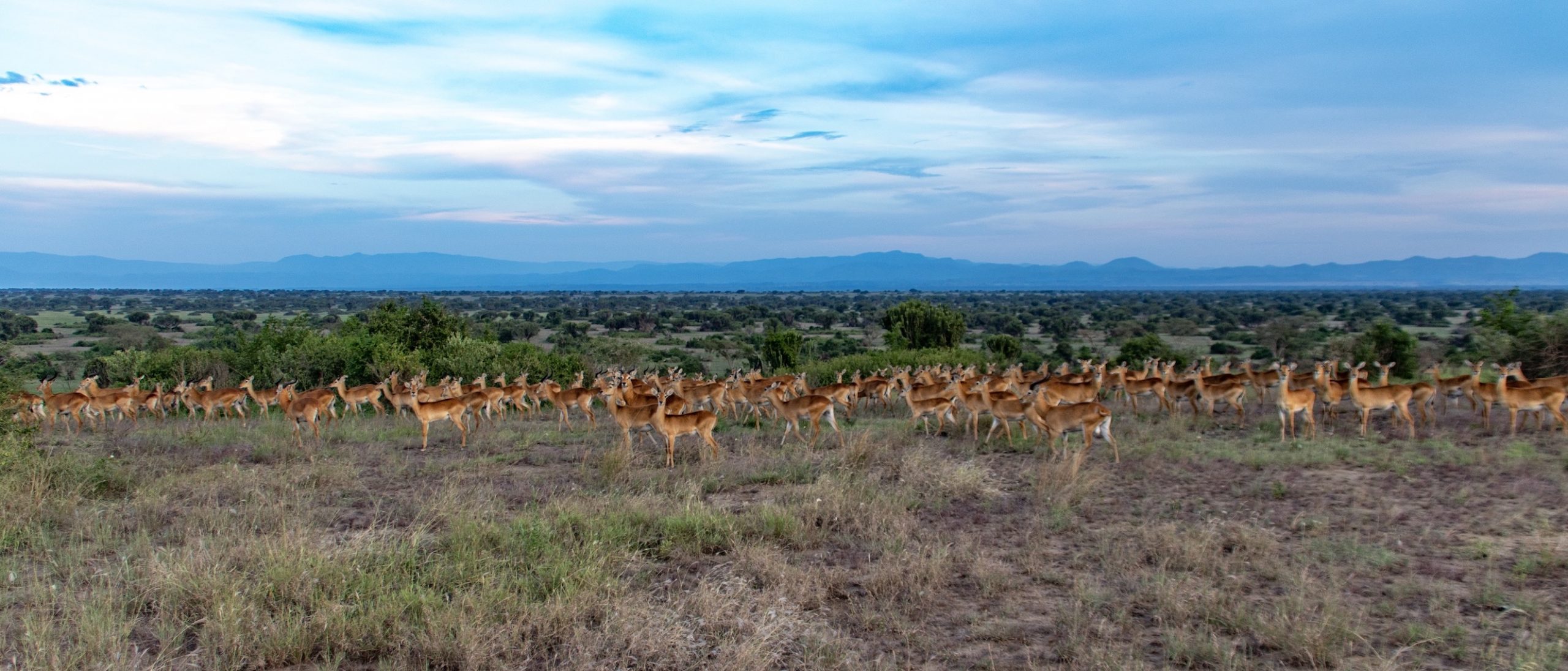
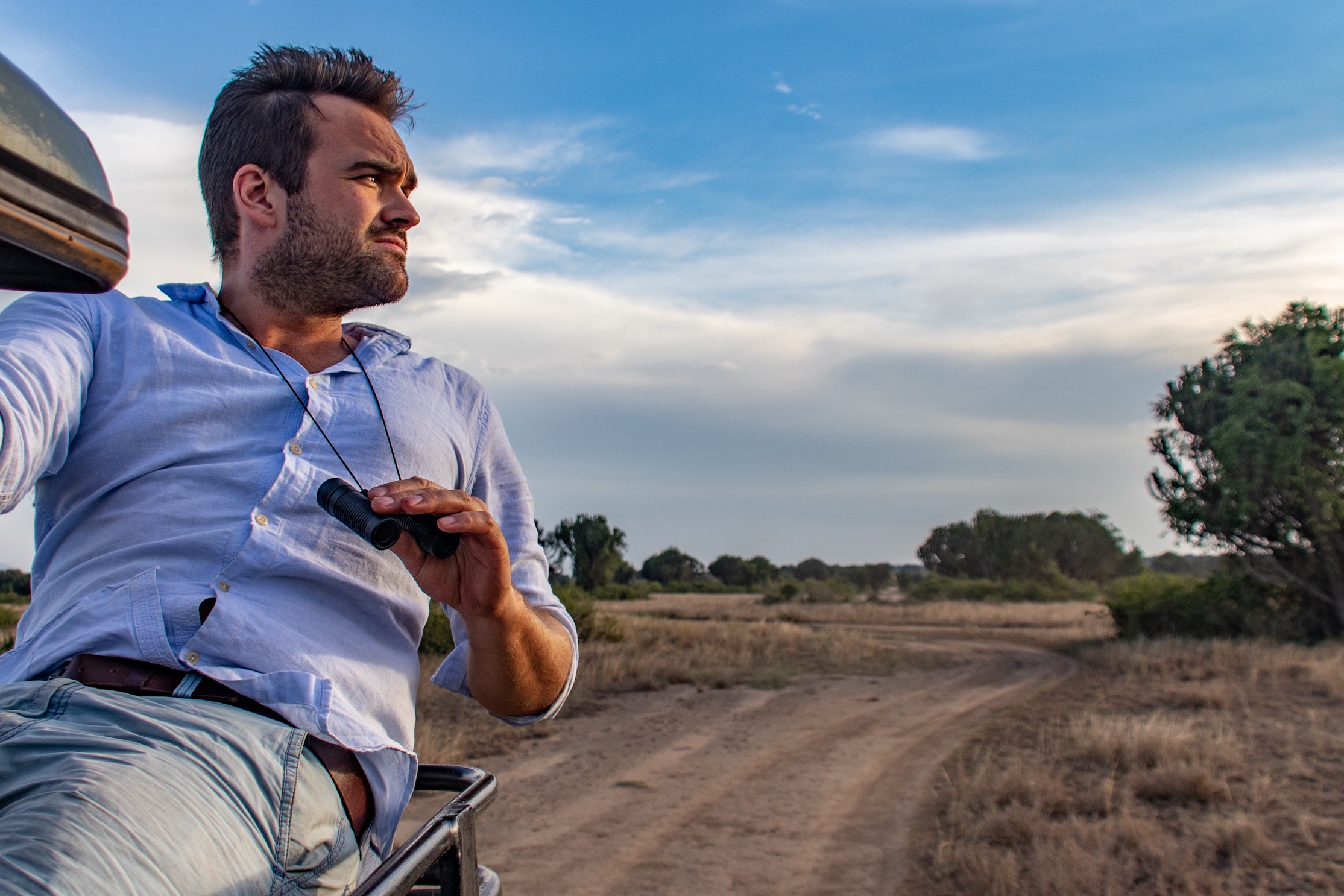
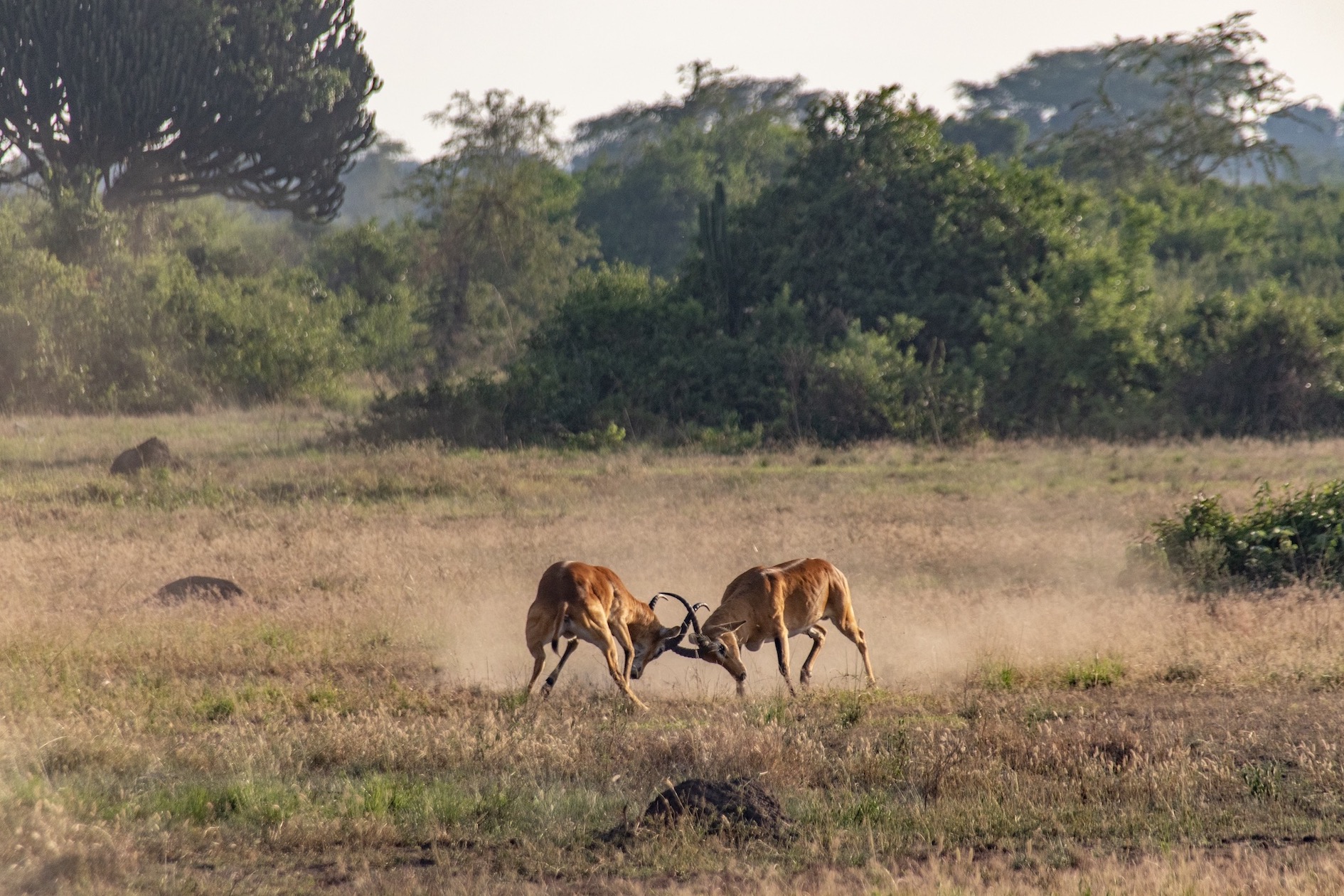
Neben herkömmlichen Game Drives gibt es auch die Möglichkeit den Queen Elizabeth Nationalpark bei einer Bootsfahrt auf dem Kazinga Channel zu erkunden. Der Channel verbindet Lake Edward (der größere Teil dieses Sees gehört zum Kongo, der kleinere zu Uganda) und Lake George. Vom Boot aus könnt ihr zahlreiche Tiere wie Elefanten, Hippos, Büffel und wenn ihr Glück habt sogar Löwen beobachten.
Kleiner Tipp: Der Bootstrip soll vor allem in der Trockenzeit ein Highlight der Uganda Safari sein.
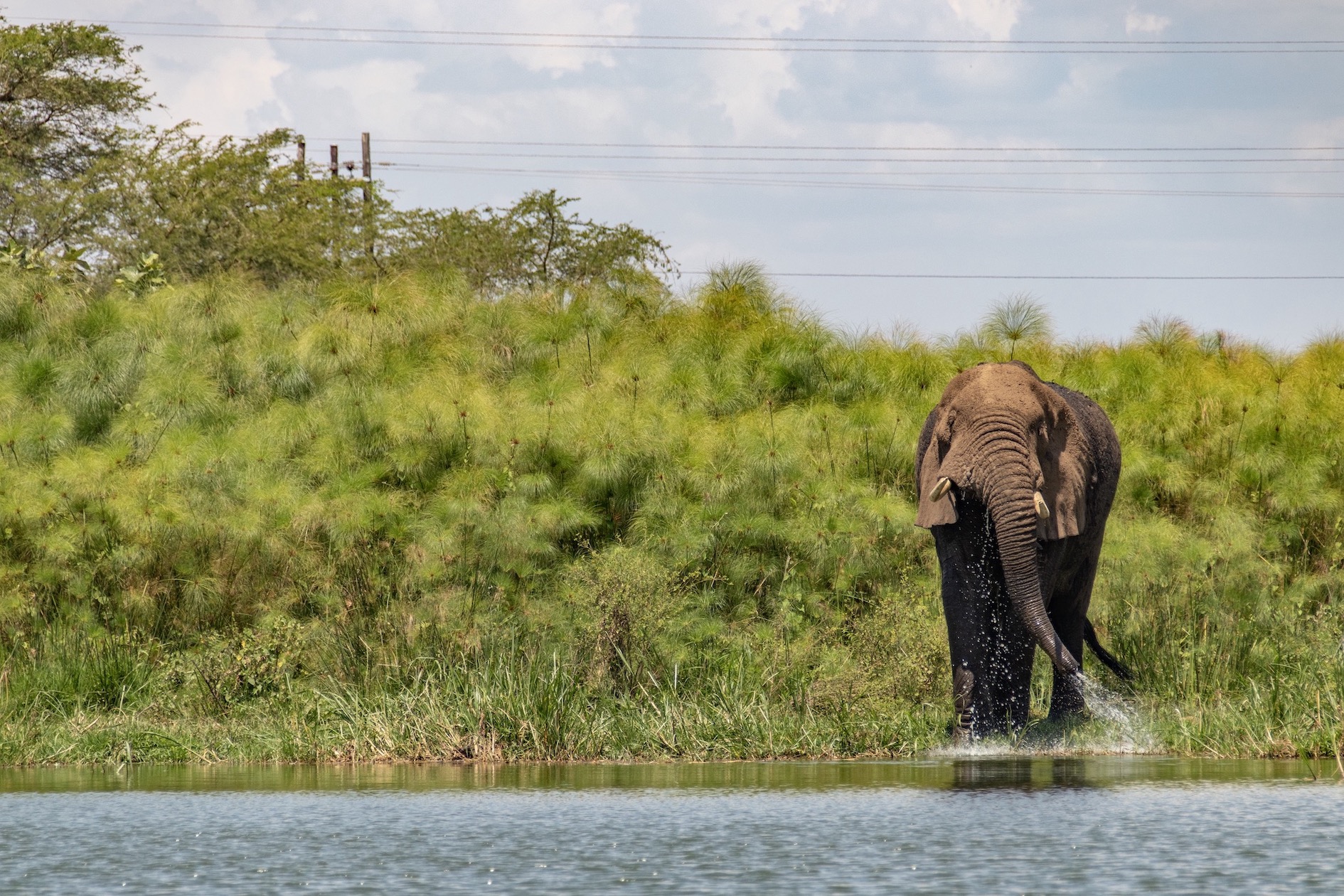
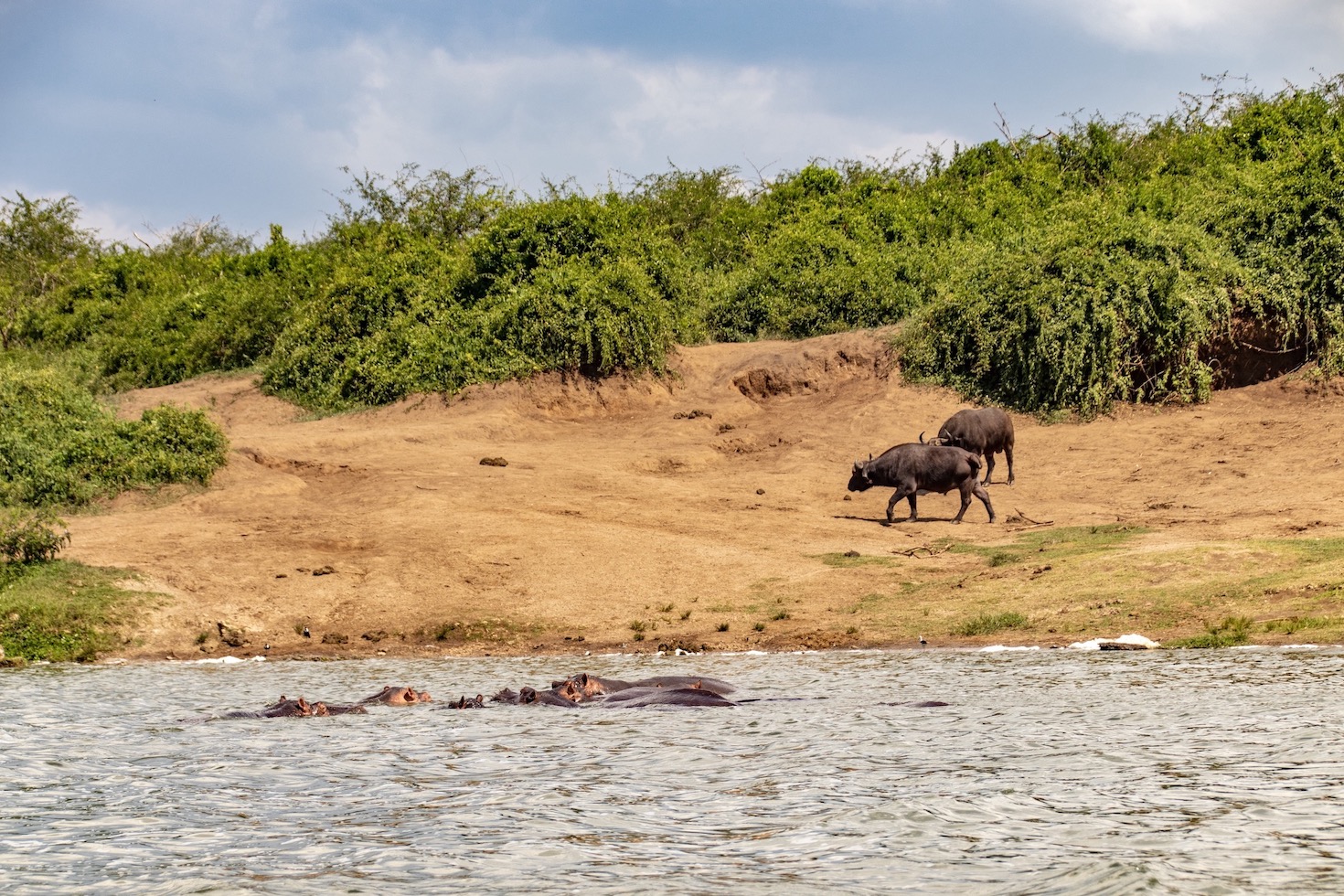
Bwindi Impenetrable Forest - Uganda Nationalparks
Der mystische Bwindi Impenetrable Forest ist einer der letzten Orte der Erde, an dem die legendären Berggorillas leben und damit auch das Highlights unserer Uganda Nationalparks.
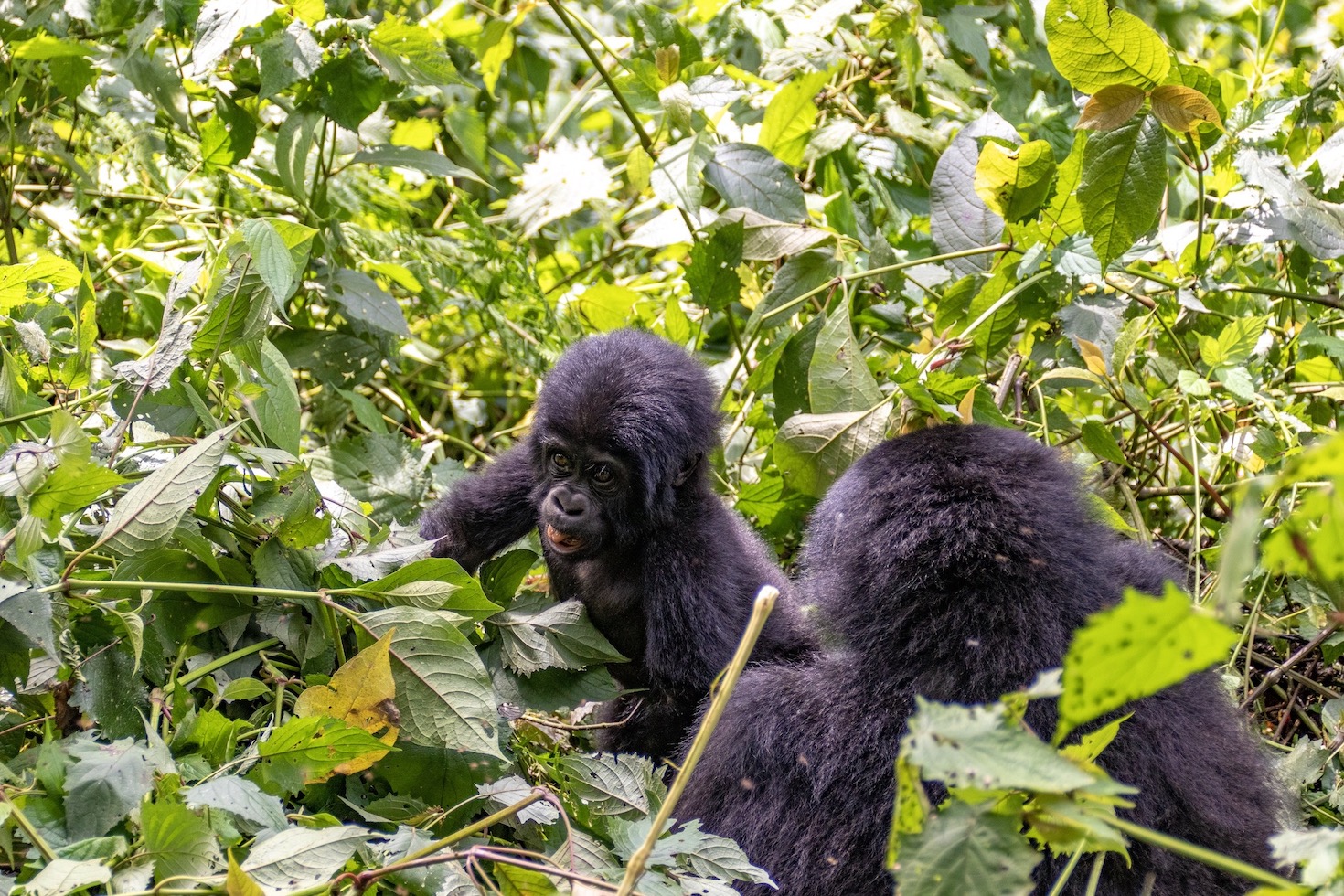
Für das Gorilla Trekking ist ein Permit notwendig, welches lange vor der Uganda Safari beantragt werden muss. Das Permit ist mit $600 nicht ganz billig.
Der Bwindi Nationalpark ist in die vier Bereiche Buhoma, Ruhija, Nkuringo und Rushaga unterteilt. Den Bereich müsst ihr bereits bei der Permitbuchung mitangeben.
Pro Tag dürfen maximal 72 Personen am Gorilla Trekking teilnehmen. Mehr als acht Personen pro Gruppe sind auch nicht erlaubt. Damit will die Parkverwaltung verhindern, dass die Gorillas im südlichsten Nationalpark Ugandas zu stark beeinträchtigt werden.
Bereits am frühen Morgen, wenn die Besucher noch schlafen, starten Tracker mit der Spurensuche und spüren die Gorilla-Familien auf. Wenn die Besucher eintreffen, führen die Tracker die Guides per Funk zu den Gorillas. Je nach Aufenthaltsort der Primaten kann die Wanderung zwischen 5 Minuten und mehreren Stunden dauern. Nach einem informativen Briefing startet der absolute Höhepunkt einer jeden Uganda Safari. In kleinen Gruppen geht es durch schweres Gelände im Regenwald. Die Guides und bewaffneten Ranger versorgen ihre Gäste mit ausführlichen Informationen zur Gorilla-Familie und deren sozialem Gefüge. Hier im dichten Dschungel gibt es keine Wege oder Trampelpfade. Es geht mit der Machete durchs Dickicht des Regenwalds.
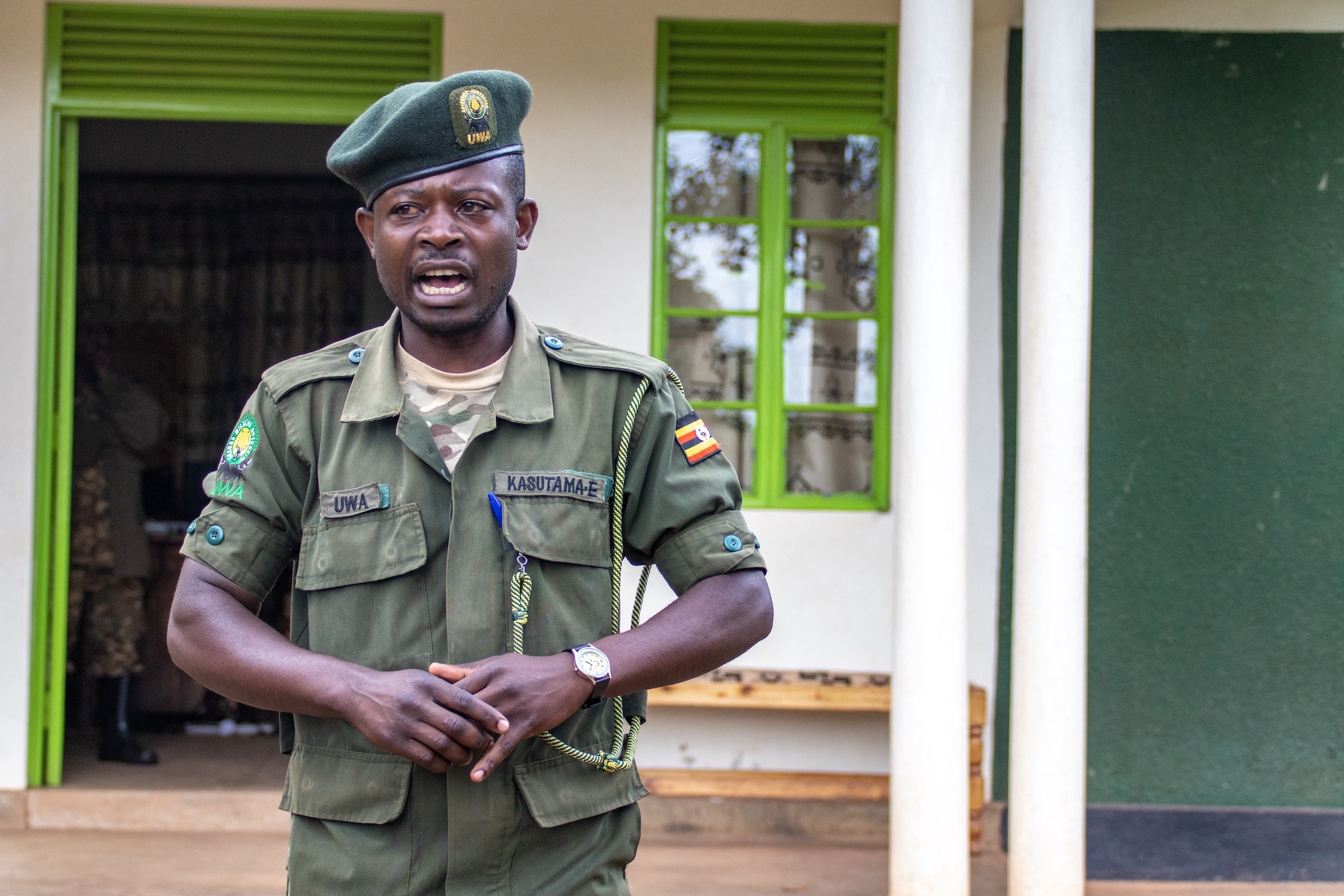
Bereits vor der Wanderung, könnt ihr euch einen Träger buchen, der Rucksäcke trägt oder bei der Wanderung unterstützt.
Folgende Kleidung und Ausrüstung hat sich bei uns bewährt.
– Lange Kleidung
– Lange Socken (die Hose in die Socken stecken)
– Mückenspray
– Wasser
– Regenjacke (da es im Rainforest immer wieder mal regnet)
– Wanderschuhe
– Lunchpaket (da man nie weiß, wie lang das Trekking dauert)
– Trinkgeld (für Guide, Ranger und Tracker)
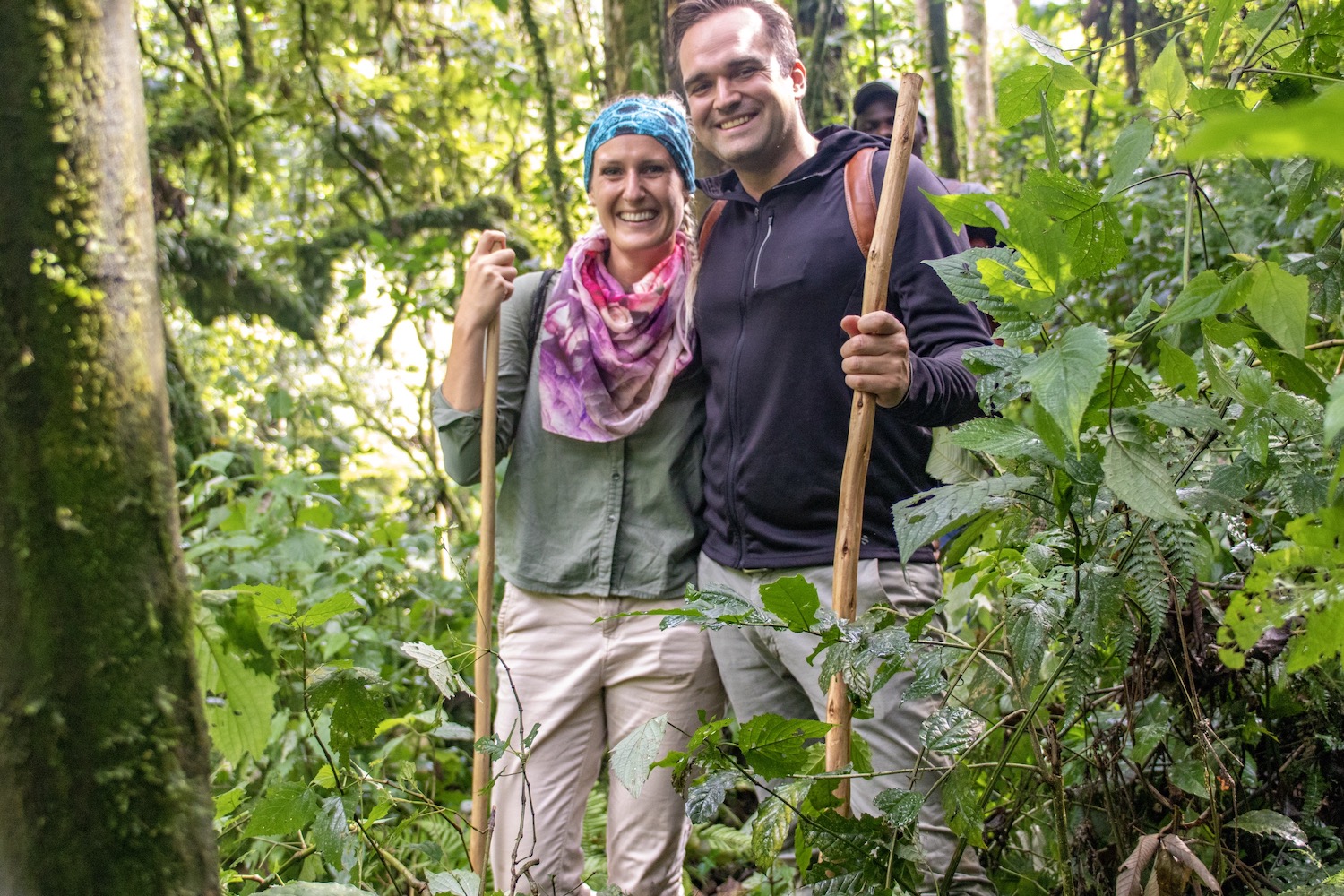
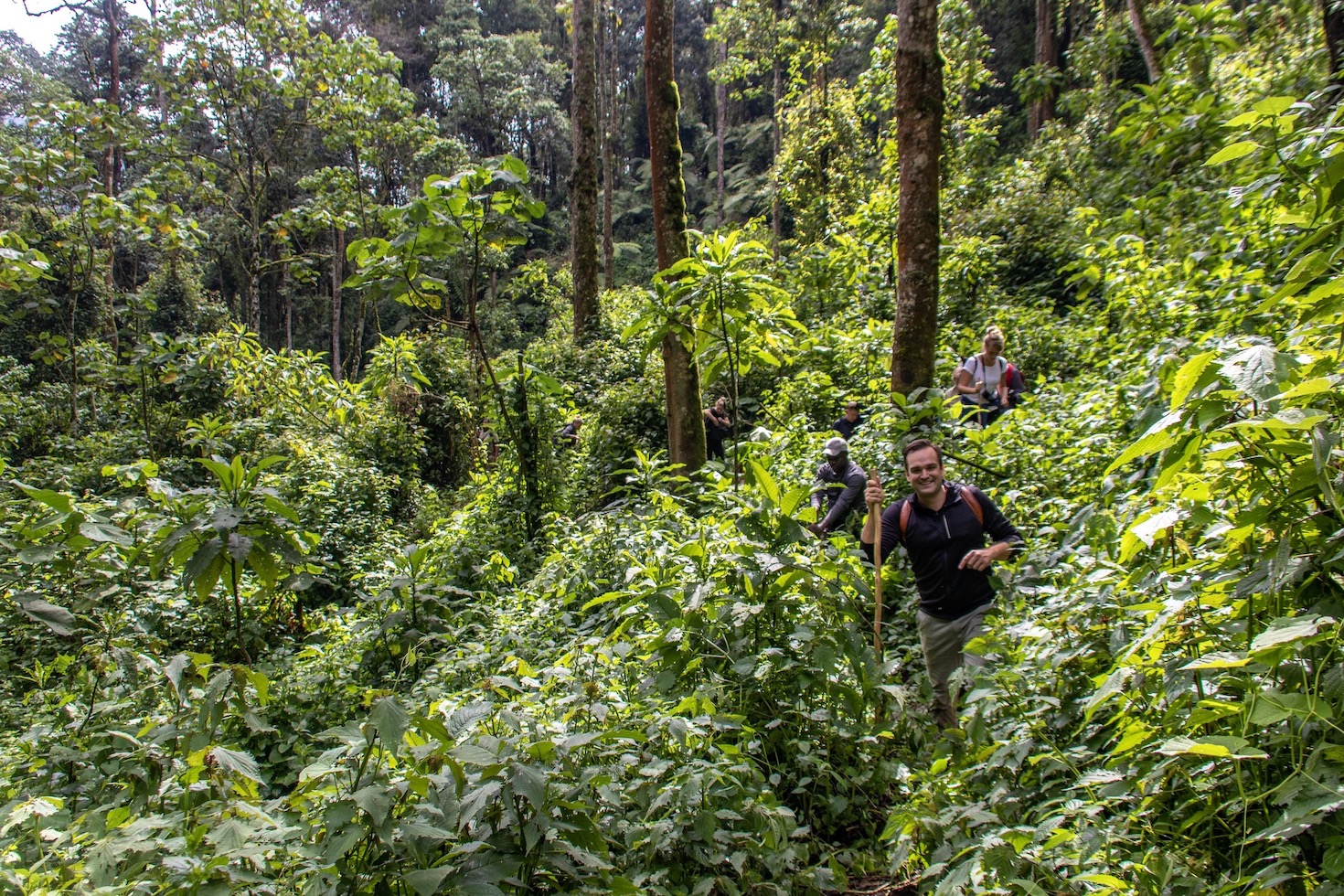
Wir haben unsere Gorilla Familie nach etwa einer Stunde Wandern gefunden. Die Gorillas saßen an einem Hang im Gebüsch. Das war wirklich eine wunderschöne Erfahrung. Die Gorillas kommen wirklich ganz nahe heran und es hat uns wirklich verzaubert Ihnen bei ihrem Sozialleben über die Schulter schauen zu dürfen. Insgesamt waren wir inklusive Wanderung und Brotzeit im Dschungel ungefähr vier Stunden unterwegs und kamen total dreckig aber überglücklich wieder am Ausgangspunkt an. Das Gorilla-Trekking im Bwindi Impenetrable Forest war das spektakuläre Highlight unserer Uganda Safari.
Im Bwindi Impenetrable Forest sollte warme Kleidung immer im Gepäck sein. In der Nacht kann es richtig kalt werden. Die Camps sind gut darauf vorbereitet und bieten Kaminfeuer, Wärmflaschen (Bush-Babies), Tee und so weiter an, aber unterschätzt die Temperaturen dort oben auf dem Hochplateau nicht. Das Thermometer fällt nachts auch mal unter fünf Grad.
